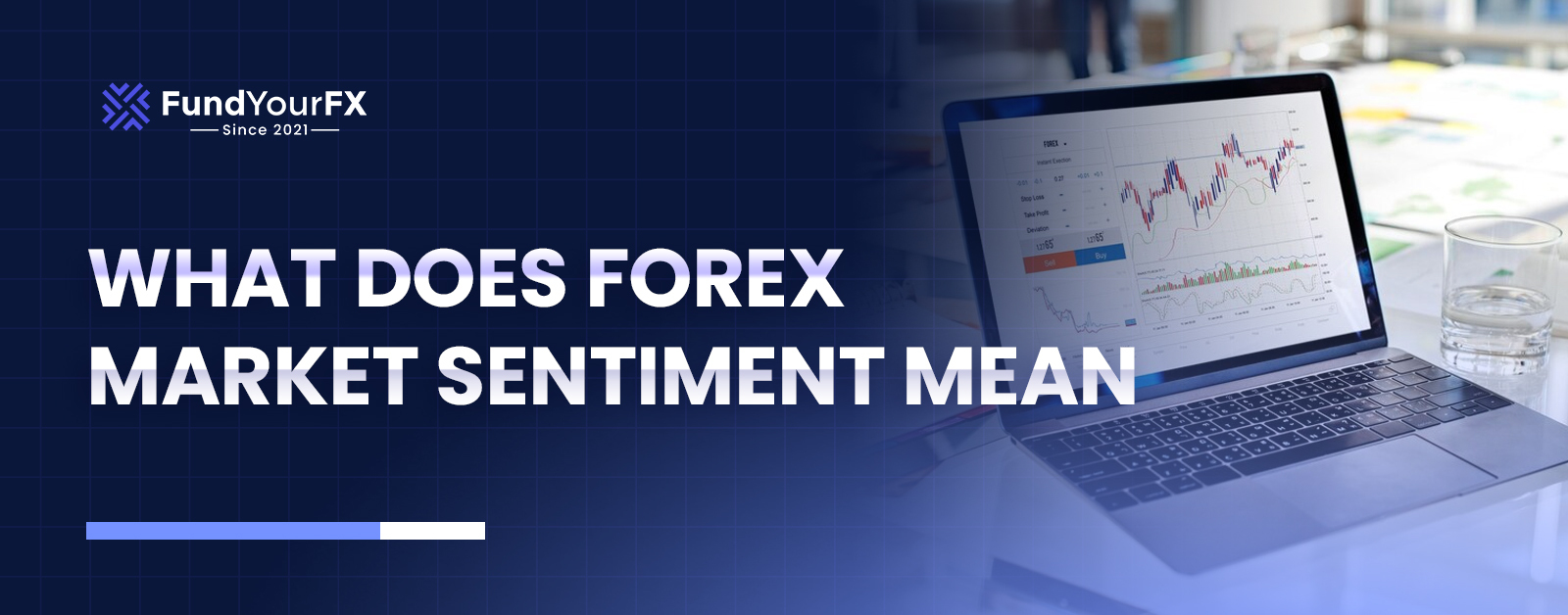Understanding market sentiment is vital when trading forex, as it captures the shared perspectives and emotions of traders that can impact price movements and market volatility. By analyzing sentiment, you can determine if the market is leaning towards a bullish or bearish outlook, which can indicate potential trends or reversals. This insight can provide a significant advantage in making trading decisions. However, effectively interpreting these signals requires a thorough understanding of sentiment indicators and their practical uses.
For instance, if you notice a shift in sentiment towards a specific currency pair, it may suggest an upcoming price change. Tools such as the Commitment of Traders (COT) report or sentiment indicators from trading platforms can help you gauge whether traders are predominantly optimistic or pessimistic. This approach allows you to align your trading strategies with prevailing market conditions, increasing your chances of success.
What is Market Sentiment in Forex?

Market sentiment is the overall attitude or feeling that traders have about a particular market. Think of it as the market’s emotional climate—it reflects whether most participants are feeling optimistic (bullish) or pessimistic (bearish).
This collective mood isn’t just a background detail; it actively drives price changes in all kinds of markets—stocks, forex, bonds, and even cryptocurrencies. Prices often move not just because of facts or news, but because of the way traders react to them.
For short-term traders, paying attention to market sentiment is essential. Ignoring it is a bit like heading out to sea without checking the forecast: you might get lucky, but you’re taking on extra risk for no good reason. By understanding the general mood of the market, you can make smarter decisions and avoid getting caught off guard by sudden changes in price direction.
Understanding Market Sentiment in Forex
Sentiment analysis reveals whether most traders anticipate upward trends, indicating optimism, or downward trends, signaling concerns about a currency’s future. This understanding of trader psychology is essential, as it helps you spot when the market may be leaning too far in one direction, which could lead to corrections. Effective sentiment analysis is even more powerful when combined with risk management principles to protect trading capital and navigate volatile conditions. Staying informed about ongoing education is also crucial, as it equips traders to interpret sentiment shifts and adjust strategies accordingly.
For instance, if sentiment data shows that a significant majority—like 83%—of traders are betting against the EUR/USD, this strong bearish outlook might hint at a possible turnaround if the situation becomes extreme.
Keeping an eye on these sentiment shifts can empower you to make better-informed trading decisions by understanding the forces at play in price movements. Key market sentiment indicators, such as the CBOE Volatility Index, provide traders with valuable insights into broader investor attitudes and potential volatility in the forex market.
Essential Tools for Analyzing Forex Sentiment
In forex trading, while technical and fundamental analysis play vital roles, using sentiment analysis tools can significantly improve your decision-making. These tools provide immediate insights into trader psychology. For beginners, it’s essential to understand concepts like pips and spreads as they form the foundation for interpreting sentiment data effectively.
For instance, the SWFX Sentiment Index and buyer-to-seller ratios collected from various brokers give a clear picture of the balance between long and short positions in different currency pairs. A useful addition to this approach is monitoring market sentiment tools, which can help you assess shifts in trader attitudes that may precede significant price movements.
By keeping an eye on how market news influences sentiment changes, you can identify early indicators of shifting trends. Additionally, employing sentiment divergence strategies, where you pinpoint inconsistencies between market sentiment and price movements, can help you anticipate potential reversals.
Furthermore, examining historical sentiment data allows you to spot patterns in trader behavior and liquidity fluctuations. This analysis can refine your forex market predictions and enhance your trading strategies.
As you engage with these tools, remember that understanding the collective mindset of traders can offer you a substantial edge in the forex market.
Integrating sentiment analysis with economic indicators allows traders to make more informed decisions by considering both psychological and fundamental market drivers.
How to Interpret Sentiment Data for Trading Decisions
After collecting sentiment data from sources like broker position ratios or sentiment indices, the next step is to analyze these figures in relation to overall market behavior.
Start by examining the balance of long and short positions. For instance, if sentiment data shows that 83% of traders are short on EUR/USD, this significant imbalance might indicate a contrarian trading opportunity, suggesting a possible price reversal. Understanding the risk-to-reward ratio can help you evaluate whether acting on such sentiment signals aligns with your broader risk management strategy. Incorporating stop-loss orders in your trades at this stage is essential, as it helps limit potential losses if the market moves unexpectedly.
Keep an eye on shifts in trader behavior, such as a transition from a majority of short positions to a growing number of long positions—these changes can signal emerging market trends.
To increase the reliability of your analysis, compare sentiment data across various brokers.
Integrating sentiment analysis with technical analysis patterns can further enhance your ability to identify high-probability trade setups and improve entry or exit timing.
Lastly, use sentiment as a confirmation tool in your trading approach, especially in situations where the market appears overbought or oversold, to enhance the precision of your trading decisions.
Real-Time Forex Market Sentiment Indicator and Their Features
Real-time sentiment indicators are vital tools in today’s forex trading environment, providing immediate insights into the collective positioning of traders across various currency pairs.
These indicators deliver timely updates that help you track changes in buying and selling pressure, offering a glimpse into trader psychology as it develops. By aggregating data from numerous brokers, sentiment analysis becomes more precise, reducing the impact of outliers and better reflecting actual market conditions. In February 2024, market volatility driven by central bank decisions and economic releases further highlighted the importance of monitoring sentiment indicators. Monitoring economic indicators such as unemployment rates and GDP growth can further help traders anticipate shifts in sentiment and spot emerging trends.
When sentiment indicators reveal that 60% or more of traders lean towards one direction—whether buying or selling—it can indicate potential market reversals, as extreme sentiment often foreshadows shifts in trends.
With updates available as frequently as every 30 minutes, these tools empower you to respond quickly to changing sentiment dynamics.
Staying informed about scheduled announcements is also crucial, as these news releases can significantly shift market sentiment and trigger volatility that real-time indicators can help you track.
How Do You Trade with Sentiment?
While forex sentiment analysis can provide useful insights into market psychology, translating that information into effective trading strategies requires a disciplined and systematic approach.
Begin by utilizing sentiment analysis tools, like the Forex Sentiment Index, to gather insights on how traders are positioned. For instance, if a significant 83% of traders are taking short positions on EURUSD, consider employing contrarian strategies, as extreme sentiment can often precede market reversals.
To increase reliability, analyze sentiment data from various brokers to confirm trends and minimize biases. Additionally, treat sentiment-driven trading as a filter; ensure your trade setups reflect broader sentiment trends to boost your chances of success.
By applying these strategies, you can better manage the complexities of sentiment in the forex market. Maintaining objectivity in trading is essential, as it allows you to base decisions on data and analysis rather than emotions, ultimately fostering consistency and discipline.
Market Sentiment Trading Example

Market sentiment plays a crucial role in shaping price movements in the financial markets, especially in high-volatility assets like Tesla (TSLA). By analyzing how the crowd feels—through news headlines, social media chatter, analyst upgrades, and sentiment analysis tools—traders can gain valuable insights into the potential direction of a stock before making a move.
| Step | Details |
| Scenario | Trading Tesla (TSLA) shares using market sentiment as a key indicator. |
| Step 1: Gather Sentiment Data | – News Headlines: Tesla Q2 earnings beat expectations – Social Media: Positive buzz, “$TSLA to the moon!” trending – Analyst Ratings: Target price upgrades from major banks – Sentiment Tools: 75% positive sentiment detected in the last 24 hours |
| Step 2: Confirm with Price Action | – Pre-market Trading: TSLA up 3% – Volume: Higher than average – Technical Patterns: Breakout above resistance with high volume |
| Step 3: Make a Trading Decision | – Trade Setup: Expect continued bullish move – Strategy: Buy TSLA at market open – Risk Management: Stop-loss below pre-market low |
| Step 4: Monitor and Exit | – Ongoing Sentiment: Watch for any negative news or social buzz – Profit Target: Exit at target price or if sentiment turns negative |
| Summary | Market sentiment trading combines news, social trends, analyst views, and tools to guide trades. In this example, positive sentiment drives a long position on TSLA. Risk is managed with stop-losses and sentiment tracking. |
Conclusion
Understanding forex market sentiment is key to predicting price trends. Tools like the SWFX Sentiment Index allow traders to assess market behaviors effectively. By combining sentiment analysis with solid risk management practices, you can improve your trade entries and exits, minimizing your vulnerability to sudden market changes. Keeping an eye on real-time sentiment indicators and analyzing their implications enables you to make well-informed decisions. This approach strengthens your capability to handle the complexities of the forex market with better accuracy and assurance.






